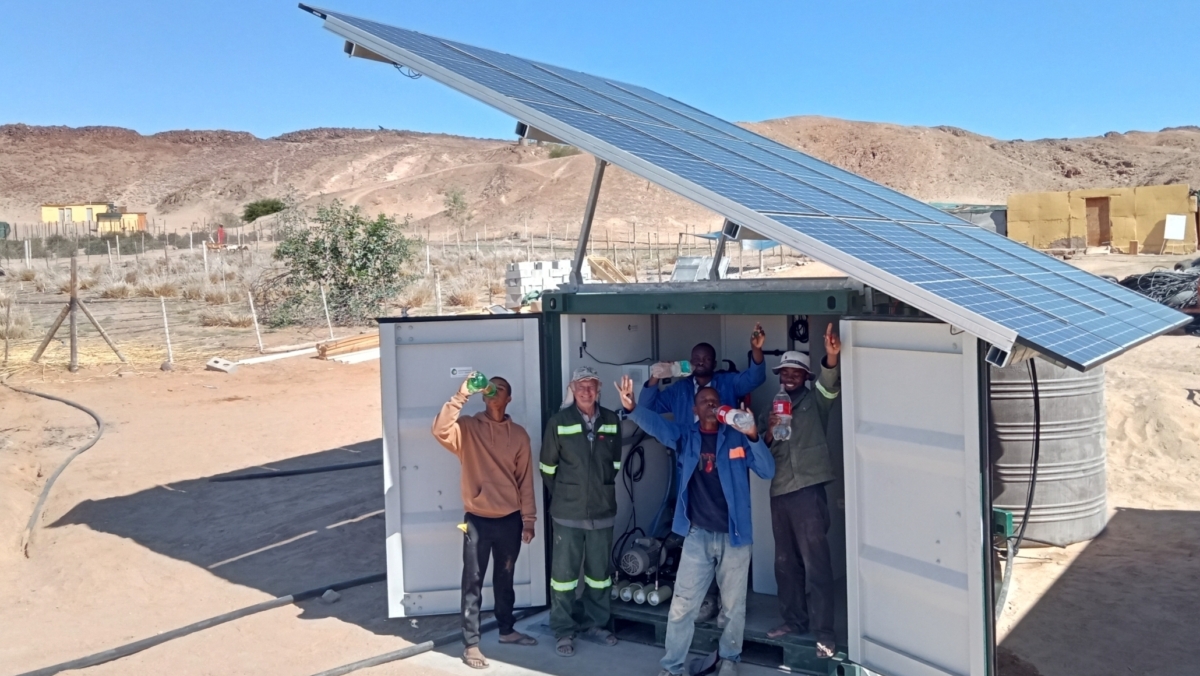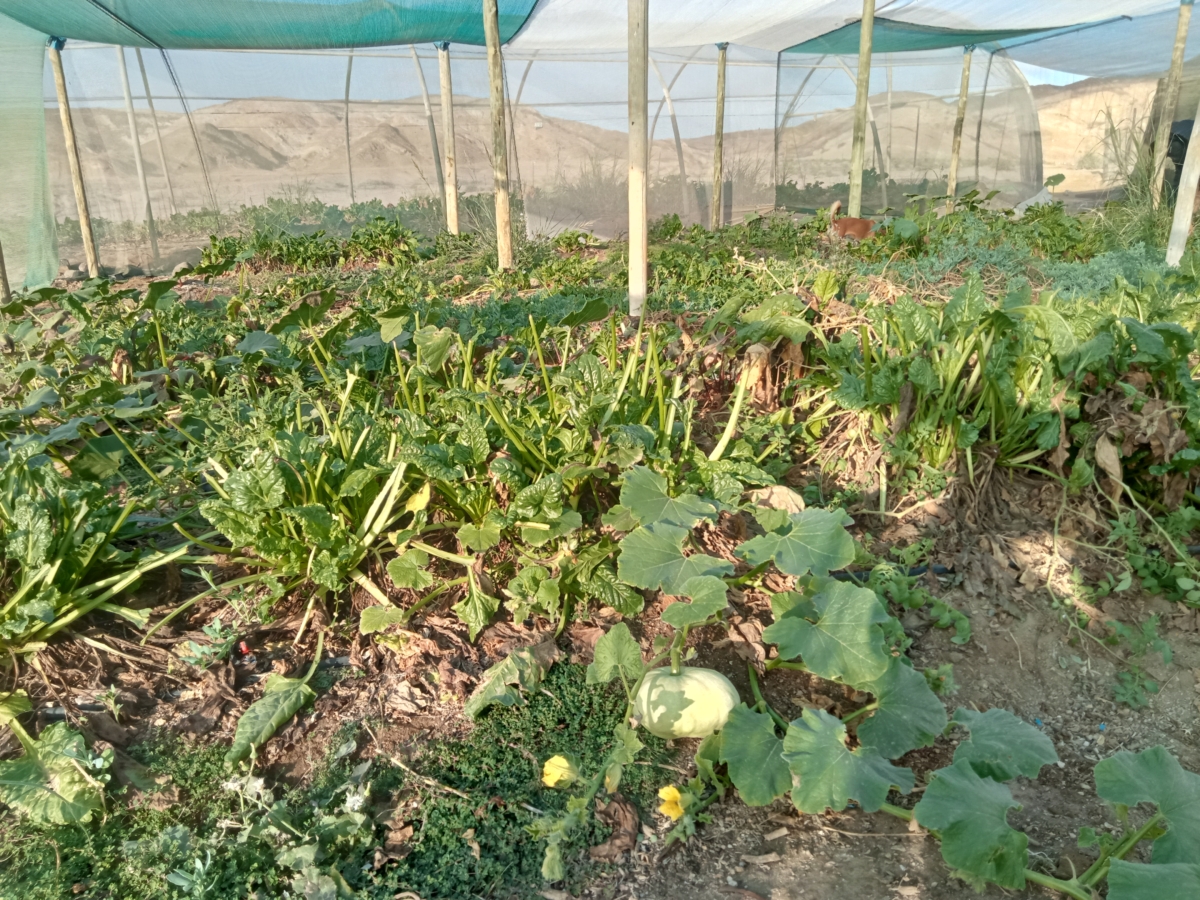Yes, solar desalination can absolutely produce water for agriculture. Modern solar-powered desalination systems create high-quality freshwater that meets agricultural standards, providing a reliable and cost-effective solution for farms in coastal areas. These systems produce water with low salinity levels suitable for irrigation, while operating costs remain significantly lower than traditional water sources like trucked water or diesel pumps. The consistent water quality and supply from solar desalination makes it particularly valuable for high-value crops and salt-sensitive plants.
What makes solar desalination suitable for agricultural water needs? #
Solar desalination technology produces freshwater that meets WHO drinking water standards, making it more than suitable for agricultural applications. The process removes salts and minerals from seawater, creating water with extremely low salinity levels that actually benefit crop growth and soil health.
Unlike traditional water sources that may vary in quality, solar desalination provides consistent water parameters throughout the growing season. This reliability helps farmers maintain optimal growing conditions and predict crop yields more accurately. The water typically contains less than 500 parts per million of dissolved solids, well below the threshold that affects most crops.
The cost-effectiveness of solar desalination compared to alternatives makes it particularly attractive for agricultural operations. When you compare it to trucked water (ranging from 10-20 €/m³ in remote regions) or diesel-powered pumping systems, solar desalination offers lower operational costs after the initial investment. The systems harness free solar energy, eliminating fuel costs and reducing energy consumption to just 3 kWh/m³ compared to traditional desalination solutions that use 7-10 kWh/m³.
For farms dealing with water scarcity or high water costs, solar-powered systems provide a dependable irrigation solution. The technology operates reliably even in remote coastal locations, producing water daily without requiring constant supervision or complex maintenance procedures.
How much water can solar desalination systems produce for farms? #
Solar desalination systems range from small-scale units producing 5,000 litres daily to larger installations generating 100,000 litres or more. This flexibility allows farmers to match system capacity with their specific irrigation needs and expand production as their operations grow.
To calculate your agricultural water needs, consider these factors:
- Crop type and growth stage (seedlings require less water than mature plants)
- Local climate conditions and seasonal variations
- Irrigation method efficiency (drip irrigation uses 40-60% less water than flood irrigation)
- Soil type and water retention capacity
- Total cultivated area
For example, a one-hectare vegetable farm in a Mediterranean climate typically needs 30,000-50,000 litres per day during peak growing season. A medium-sized solar desalination system can easily meet these requirements while providing buffer capacity for dry periods.
The modular design of modern solar desalination systems allows for easy scaling. You can start with a smaller unit and add additional modules as your farming operation expands or water demands increase. This scalability makes solar desalination practical for both small family farms and larger commercial agricultural operations.
What are the costs of using solar desalinated water for irrigation? #
Initial investment for agricultural solar desalination systems typically ranges from €70,000 for small systems to €450,000 for large installations, depending on the required water production capacity. While this upfront cost may seem substantial, the long-term operational savings make it a sound investment for most farming operations.
The operational cost advantages become clear when you compare solar desalination to traditional water sources:
- Current water spending for resorts, villas and industries on islands ranges between 5-10 €/m³
- Trucked water costs 10-20 €/m³ for commercial users in remote regions
- Traditional desalination systems generate water for around 3-6 €/m³
- Solar desalination operates with free solar energy and can enable clean water for 1-3 €/m³
Most agricultural operations see a return on investment within 3-7 years, depending on local water costs and system utilisation. After this payback period, farmers essentially receive free water for irrigation, dramatically improving their profit margins.
The elimination of fuel costs provides protection against energy price fluctuations, allowing farmers to budget more accurately for long-term planning. Additionally, the systems’ 15+ year lifespan means decades of reliable, low-cost water production after the initial investment is recovered.
Which crops benefit most from solar desalinated water? #
High-value crops like vegetables, fruits, and greenhouse cultivation show the greatest benefits from solar desalinated water. The consistent water quality and low salinity levels create ideal growing conditions for these profitable crops, often resulting in improved yields and product quality.
Salt-sensitive crops particularly thrive with desalinated water:
- Strawberries and other berries
- Lettuce and leafy greens
- Tomatoes and peppers
- Citrus fruits
- Avocados
- Ornamental flowers
These crops often show reduced tip burn, better fruit development, and increased market value when irrigated with low-salinity water. The absence of harmful salts also prevents soil degradation, maintaining productive growing conditions season after season.
For organic farming operations, the chemical-free nature of solar desalination provides additional benefits. The water requires no chemical treatment, maintaining organic certification standards while providing pure irrigation water. Some systems even allow for minor mineralisation adjustments to optimise water for specific crop requirements, giving farmers precise control over their irrigation water quality.
How does Elemental Water Makers support agricultural water solutions? #
We bring extensive experience providing water solutions for coastal agricultural operations worldwide. With over 100 installations across 35 countries, we understand the unique challenges farmers face when securing reliable irrigation water in coastal regions.
Our plug-and-play solar desalination systems work perfectly for remote farming locations without grid access. These containerised units arrive ready to operate, requiring minimal installation time, typically just a few days for smaller systems. The modular design allows farmers to expand capacity as their operations grow.
For farms with electricity access, our efficient desalination solutions deliver significant energy savings compared to conventional systems. These units integrate seamlessly with existing farm infrastructure while dramatically reducing operational costs.
The chemical-free operation of our systems provides particular value for organic farming operations. Without any chemical dosing requirements, farmers maintain their organic certifications while accessing reliable irrigation water. Our remote monitoring capabilities allow farm managers to track water production and system performance from anywhere, ensuring consistent operation without constant on-site supervision.
We can help in submitting the technical data that may be required to apply for the permits locally. Our proven track record demonstrates that solar desalination provides a practical, sustainable solution for agricultural water needs in coastal regions worldwide.
Frequently Asked Questions #
How do I determine if my farm location is suitable for solar desalination?
Your farm is suitable for solar desalination if you're within 10 kilometres of a coastline or have access to brackish groundwater, receive at least 4-5 hours of daily sunlight, and have space for solar panels (typically 100-500 square metres depending on water needs). Additionally, areas with water costs exceeding €2 per cubic metre or limited freshwater availability see the fastest return on investment, making solar desalination particularly viable in arid coastal regions.
What maintenance is required for agricultural solar desalination systems?
Solar desalination systems require minimal maintenance consisting of monthly visual inspections, quarterly cleaning of solar panels, and semi-annual filter replacements that take about 2-3 hours. Most farmers can handle routine maintenance themselves after basic training, while annual professional servicing ensures optimal performance and extends system lifespan beyond 15 years.
Can I integrate solar desalinated water with my existing irrigation infrastructure?
Yes, solar desalinated water integrates seamlessly with existing drip irrigation, sprinkler systems, or pivot irrigation setups without requiring modifications. The water's consistent pressure and quality actually improve irrigation system performance by reducing clogging from minerals and salts, while storage tanks can be added to match water production with irrigation schedules for maximum efficiency.
What happens during cloudy days or periods of low solar radiation?
Modern solar desalination systems include battery storage or grid connection options to maintain water production during cloudy periods, typically providing 2-3 days of buffer capacity. Additionally, most agricultural installations incorporate water storage tanks holding 1-3 days of irrigation supply, ensuring continuous water availability even during extended cloudy weather or system maintenance.
How does solar desalinated water affect soil health over time?
Solar desalinated water actually improves soil health by preventing salt accumulation that occurs with traditional irrigation sources, maintaining optimal soil structure and microbial activity. The low sodium content (typically under 200 ppm) helps preserve soil permeability and prevents the formation of hardpan layers, while the absence of heavy metals and contaminants protects beneficial soil organisms essential for nutrient cycling.
What permits or regulations apply to agricultural solar desalination installations?
Most coastal regions require environmental impact assessments and water extraction permits for seawater intake, which typically take 3-6 months to obtain with proper documentation. Agricultural operations often benefit from simplified permitting processes compared to municipal installations, and many countries offer subsidies or tax incentives for sustainable water infrastructure that can offset 20-40% of installation costs.


